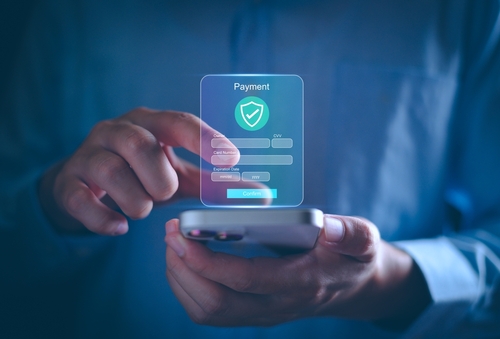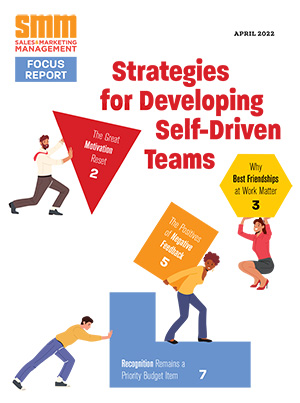Payments aren’t just a finance function anymore – they’re a revenue lever hiding in plain sight.
A recent PYMNTS study found nearly half of churn in subscription businesses stems from avoidable payment failures. Expired cards, insufficient payment methods, clunky refund loops. What used to be background noise is now a front-row revenue risk with a hefty toll. Revenue leaders are now taking notice and taking action.
The buyer journey doesn’t end at conversion – it accelerates. Landmines in the path of the customer journey like payment friction kill trust, delay value and quietly nudge customers toward the exit. That’s why payments are no longer just a finance problem, and why sales and marketing teams are now baking payment strategy into the growth playbook. Every customer touchpoint, including payments, is a brand moment. Increasingly, marketers are reframing payments as a brand experience and showcasing payment ease as part of their value proposition.
Sales and marketing might not own payments, but they do own the consequences. Whether it’s missed expansion opportunities, failed upgrades or retention slips, payments touch everything. When optimized, payments can even become a competitive differentiator, helping to build trust, reduce churn and drive growth.
This shift is part of a broader recalibration in overall go-to-market strategy: a move away from pure lead volume and toward customer lifetime value. Because just a 2% increase in customer retention can deliver the same financial impact as slashing costs by 10%, a stat highlighted by Google Business. If retention is the name of the game, then payment flow is a key player. It’s also where functions like sales, marketing, RevOps, product and finance have the chance to operate like a single team and turn operational drag into a lasting advantage
Here’s how savvy teams can turn churn risk into their next growth lever:
Step 1: Stop the Bleed: Identify and Eliminate Payment-Driven Churn
Start with payment fundamentals – both money in and money out. Sweep for passive churn: customers lost not by decision, but by payment design flaws. Look for friction points masquerading as fate – cart abandonment, failed payments , high costs of delivering payments, failed transactions due to unsupported payment types. Every dropped dollar is a breadcrumb. Follow the trail.
Consider the typical buyer’s preferred payment methods and offer multiple payment rails – credit, debit, ACH, PayPal, wallets, BNPL and even local options for global buyers. Factor in outbound too, like refunds, rebates and any other payouts owed to customers. A marketing team focused on understanding and eliminating those friction points can unlock an impactful retention strategy.
These aren’t just fixes, they’re competitive advantages. The smoother the transaction, the fewer excuses a customer has to leave.
Step 2: Turn Churn Into Earn: Unlock Revenue Hiding in the Payment Flow
Churn risks tied to payments can’t be ignored. But once they get solved, real opportunities can be built. Optimized payment experience can boost engagement that drives loyalty and results, not only in retention but new revenue growth.
Inbound flows drive revenue while outbound flows drive loyalty. By tying payment behavior to incentives like cashback, rebates and early access, you create a reason to not only transact, but to return. These incentives are powerful tools for marketing teams to promote throughout the customer journey to drive engagement and retention.
Outbound flows like refunds are often where loyalty gets decided. Automate the flow, offer flexible options, and make policies clear up front. Fast, fair refunds can turn a bad moment into a second chance.
At the tactical level, smart payment design can quietly drive both loyalty and growth. Spend-based tiers, for example, encourage larger, more frequent purchases. Embedded wallets remove friction by applying rewards automatically. Referral payouts turn happy customers into a steady acquisition engine.
Outbound payment flows carry just as much weight and aren’t just back-office hygiene for Finance – they’re growth infrastructure. Instant refunds, flexible disbursements, loyalty payouts, partner incentives and every outbound payment touchpoint is a chance to reinforce value. When payments from companies are fast, accurate, and customer-friendly, they build trust and, in many cases, spark the next transaction.
Step 3: Align Positive Payment Experience with GTM Strategy
When payment flows are seamless, you’ve got valuable competitive advantage. GTM teams should treat them like a feature and not a background fixture.
Frontline value cues like fast checkout, transparent pricing, instant refunds and local payment methods aren’t just table stakes, they’re conversion levers. According to a Mastercard Digital Payments Study, 73% of shoppers consider the payment experience a significant factor when choosing between retailers. That’s not a footnote, it’s a flashing neon sign to bring these differentiators front and center in how you sell and market.
Sales teams can point to painless procurement as a reason to buy now, not later. Marketing can showcase ease-of-use all the way through the payment experience. In competitive markets, every inch of reduced friction becomes a wedge.
Payments done right make the whole motion feel modern, polished and trustworthy. And when you sell speed, simplicity or customer love, those details aren’t small. They’re the proof.
The Endgame: Payments as a Competitive Advantage
When payments join the revenue conversation, the whole engine runs cleaner. Faster. Stronger.
The play is simple. Turn operational potholes into competitive edges. Automate the mundane, simplify the complex, and treat every payment interaction as a trust and brand-building moment. Because when you’re playing for lifetime value, even the smallest frictions can cost you a toll. And the best teams don’t wait for finance to fix it. They steer into the skid, bring payments into the fold, and build a go-to-market engine that doesn’t just convert but compounds growth.





